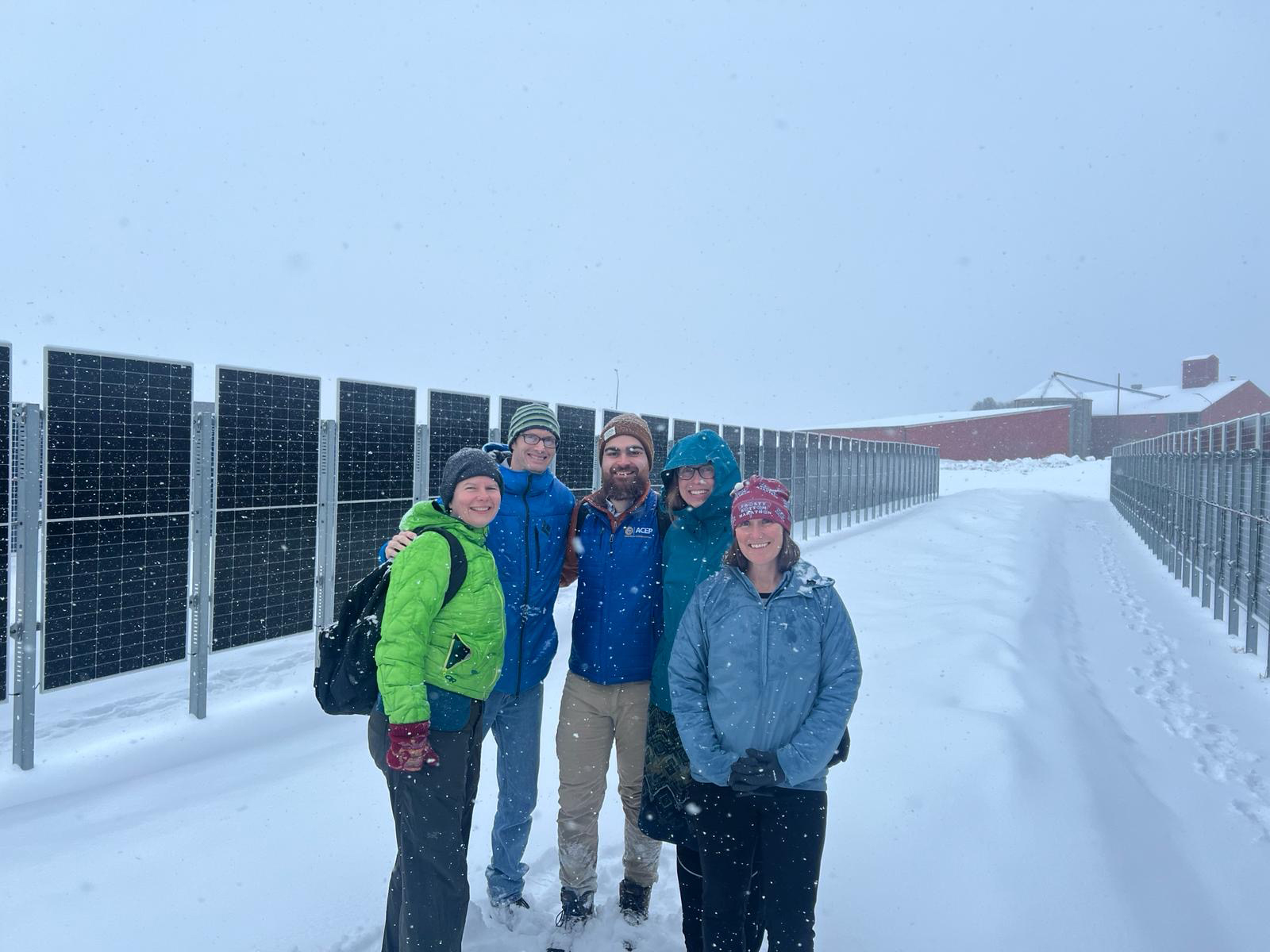ACEP and partners advance northern collaboration with High Latitude Solar PV workshop

ACEP’s Michelle Wilber, Chris Pike, Henry Toal and Christie Haupert pose for a photo with Erin Whitney, the director of the U.S. Department of Energy Arctic Energy Office (second from right), at the vertical bifacial photovoltaic pilot plant installed by Sunna Group.
April 18, 2024
Members of the ACEP Solar Technologies program and researchers and representatives from nine countries gathered in Piteå, Sweden (65 degrees north latitude) for the-first-of-its-kind workshop in mid-March, exchanging ideas around the unique opportunities and challenges of deploying solar photovoltaic, or PV, technology in high latitude regions.
The High Latitude Photovoltaics Workshop was organized by ACEP, the U.S. Department of Energy Arctic Energy Office and Sandia National Laboratories, Research Institutes of Sweden, capping off over two years of collaborative planning.
The two-day workshop kicked off with site visits to a 100-kW vertical bifacial PV pilot plant installed by Sunna Group, a fixed-tilt PV plant owned and operated by Luleå Energy, the local municipal utility, and a visit to the Piteå Solvåg, an art installation composed of bifacial PV modules. These site visits gave attendees an opportunity to see the real-life applications of the solar PV technology research in extreme climates.
The rest of the workshop included sessions about reports from the countries about lessons learned, PV performance modeling in high latitudes, industry perspectives and examples of PV integration in high latitudes. Participants discussed opportunities and obstacles of high latitude solar deployment that come with extreme cold temperatures, heavy snow loads and high winds, all of which can increase the risk of equipment failure from mechanical loading and material property changes.
Michelle Wilber’s presentation focused on her research on solar PV load coverage factors, examining how much solar PV would be required to provide for the additional load of new electric vehicles at various locations around the Arctic, while Henry Toal discussed his work using a network of solar irradiance sensors to generate short-term PV forecasts in Kotzebue, Alaska.
Chris Pike presented the country report for the U.S. and also moderated the panel of solar energy developers discussing their experiences navigating the rapidly expanding and evolving market. Christie Haupert chaired the PV integration in high latitude session and provided logistical support throughout the event.
Pike said this is a pivotal time for high latitude PV development in part because the industry is expanding rapidly as costs come down and people are proving that solar in the North makes economic sense.
“Critically evaluating the challenges facing high latitude solar energy development and working with collaborators to find solutions is key to ensuring that these high latitude regions are well-prepared for the transition to a more solar-heavy North,” Pike said.
The workshop was designed to be a first step to make sure everyone is able to learn these lessons from one another and to build a strong network of high latitude solar experts to continue advancing the field.
“I think it was a huge success,” Pike said.
A review paper, summarizing the outcomes of the workshop, is being developed. It will address current needs, highlight best practices and inform policy makers about next steps for advancing PV in high latitudes.
The workshop organizing committee is already planning the next high latitude PV event as well as continuing to gather and connect researchers for future collaborations.
A full breakdown of the workshop program and presentations can be found here.


